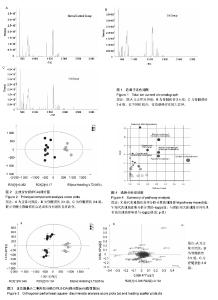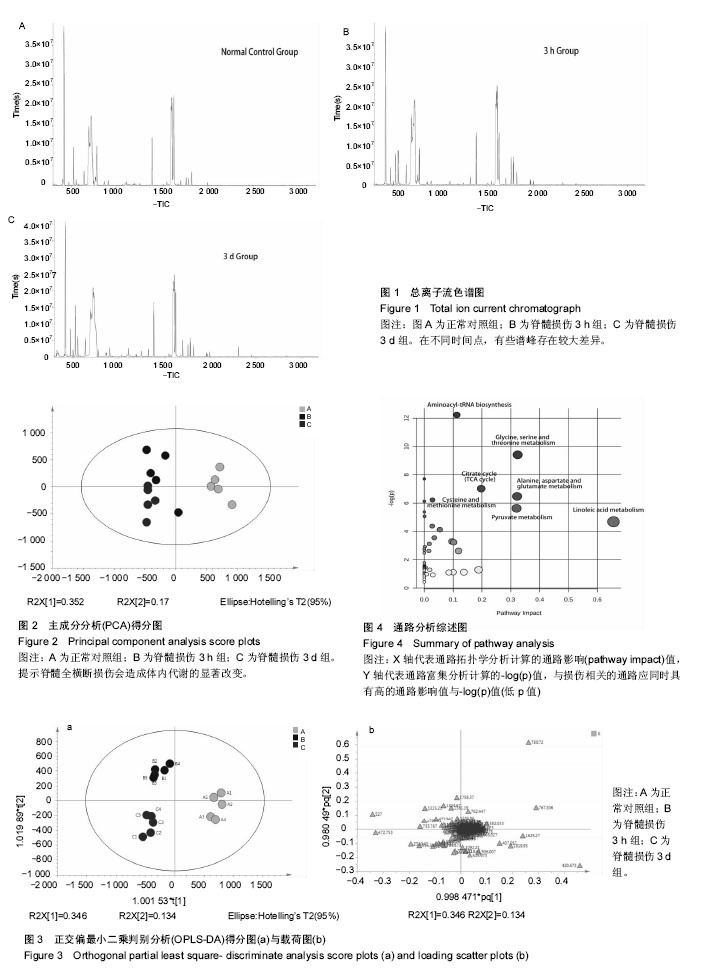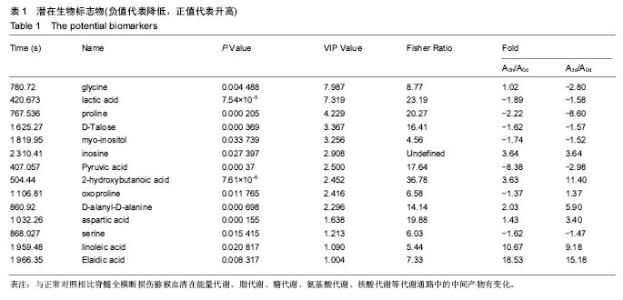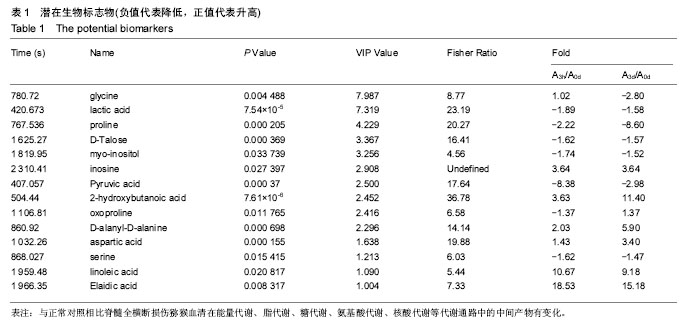| [1] Cripps RA, Lee BB, Wing P, et al. A global map for traumatic spinal cord injury epidemiology: towards a living data repository for injury prevention.Spinal Cord. 2011;49(4): 493-501.[2] Singh A, Tetreault L, Kalsi-Ryan S,et al.Global prevalence and incidence of traumatic spinal cord injury. Clin Epidemiol.2014; 6:309-331.[3] Rubiano A M, Carney N, Chesnut R, et al. Global neurotrauma research challenges and opportunities. Nature. 2015;527(7578):S193-S197.[4] Hulsebosch C E. Recent advances in pathophysiology and treatment of spinal cord injury. Adv Physiol Educ.2002; 26(1-4):238-255.[5] Rowland JW, Hawryluk GW, Kwon B,et al.Current status of acute spinal cord injury pathophysiology and emerging therapies: promise on the horizon.Neurosurg Focus. 2008; 25(5):E2.[6] Choo AM, Liu J, Lam CK, et al. Contusion, dislocation, and distraction: primary hemorrhage and membrane permeability in distinct mechanisms of spinal cord injury. J Neurosurg Spine.2007;6(3):255-266.[7] Whetstone WD, Hsu JY, Eisenberg M, et al. Blood-spinal cord barrier after spinal cord injury: relation to revascularization and wound healing.J Neurosci Res 2003;74(2):227-239.[8] 黄辉,余化霖.继发性脊髓损伤发病机制的研究进展[J].医学综述, 2013,19(7):1162-1165.[9] 许春财,许卫红. 脊髓损伤后神经细胞继发坏死机制研究进展[J]. 中国当代医药,2011,18(16):18-19.[10] More T, Roychoudhury S, Gollapalli K, et al. Metabolomics and its integration with systems biology: PSI 2014 conference panel discussion report. J Proteomics.2015;127(Pt A): 73-79.[11] 郭宾,戴仁科. 代谢组学及其研究策略和分析方法进展[J].中国卫生检验杂志,2007,17(3):554-563.[12] Feng B,Wu S,Lv S,et al.Metabolic profiling analysis of a D-galactosamine/lipopolysaccharide-induced mouse model of fulminant hepatic failure. J Proteome Res.2007;6(6): 2161-2167.[13] Feng B, Wu S, Lv S, et al. Dynamic metabonomic analysis of BALB/c mice with different outcomes after D-galactosamine/ lipopolysaccharide-induced fulminant hepatic failure. Liver Transpl.2008;14(11):1620-1631.[14] 阿基业. 代谢组学数据处理方法——主成分分析[J]. 中国临床药理学与治疗学,2010,15(5):481-489.[15] 柯朝甫,张涛,武晓岩,等. 代谢组学数据分析的统计学方法[J]. 中国卫生统计,2014,31(2):357-359.[16] Aittokallio T, Schwikowski B. Graph-based methods for analysing networks in cell biology. Brief Bioinform. 2006; 7(3):243-255.[17] Sekhon LH, Fehlings MG.Epidemiology, demographics, and pathophysiology of acute spinal cord injury. Spine (Phila Pa 1976).2001;26(24 Suppl):S2-S12.[18] Kearns PJ, Thompson JD, Werner PC, et al. Nutritional and metabolic response to acute spinal-cord injury. JPEN J Parenter Enteral Nutr.1992;16(1):11-15.[19] Liu C, Jin A, Zhou C, et al. Nitric oxide synthase gene expression in injured spinal cord tissue. Chin Med J (Engl). 2002;115(5):740-742.[20] 王玉明,唐丽,杨德刚,等. 脊髓损伤生物标记物的研究进展[J]. 中国康复理论与实践,2015,21(9):1045-1048.[21] 汤久瑜. 丙酮酸补充对机体能量代谢的影响[D]. 武汉体育学院, 2008.[22] 郭英杰. 丙酮酸补充对运动机体身体成份和脂肪代谢的影响及机理的研究[D]. 北京体育大学,2005.[23] 方振伟,麦荫乔. 一张适用于总结物质代谢途径的代谢联络图[J]. 生命的化学,2005,186(2):186-188.[24] 程刚,张宁,蔡卫华. 急性脊髓损伤后线粒体的功能变化[J]. 医学研究生学报,2011,24(8):866-869.[25] 高琦. 急性脊髓缺血/再灌注损伤能量代谢相关蛋白质组与代谢组学初步分析[D]. 吉林大学,2011.[26] 徐又佳,郑祖根,刘春风,等. 脊髓损伤对部分脑区谷氨酸和甘氨酸水平的影响[J]. 江苏医药,2002,28(8):592-594.[27] 俞晨,徐又佳,张志琳,等. 脑微透析法研究大鼠脊髓损伤后脑内兴奋性氨基酸的动态变化[J]. 苏州大学学报(医学版), 2006, 26(6):923-926.[28] 曹晓建,罗永湘. 大鼠脊髓损伤后谷氨酸和天冬氨酸含量的变化及其意义[J]. 南京医科大学学报,1998,18(5):37-39.[29] 刘宁宁,孙立忠,郑军,等. 深低温停循环脊髓损伤的微透析研究[J]. 中国体外循环杂志,2009,7(1):43-47. |



